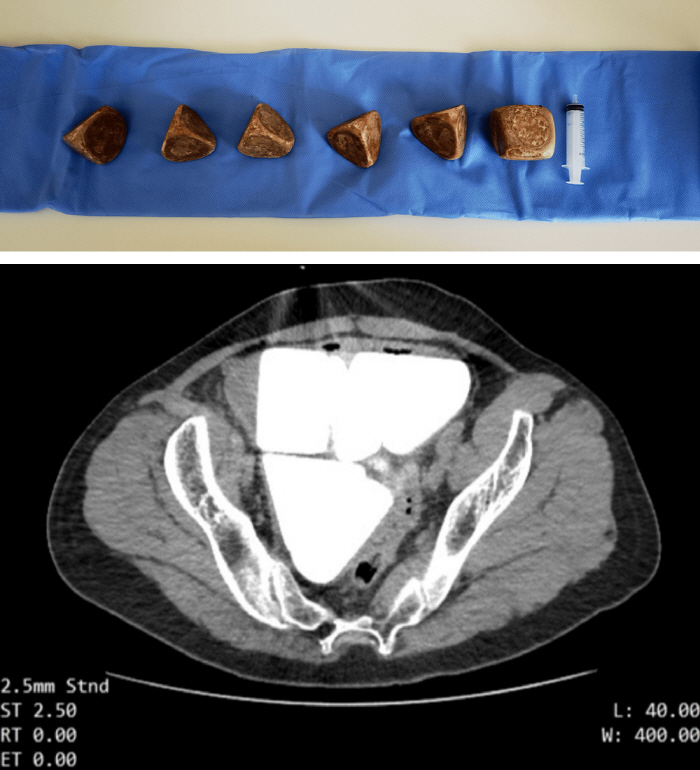Found 6 Pyramid, cuboid-shaped stones in bladder...7 cm in length and 2.1 kg in total
Apr 16, 2025
|
Medical staff at Turkiye 'Mercine Tarsus State' General Hospital published this case report in the journal 'Cureus'.
According to the contents, a Turkiye male in his 40s was suffering from neurogenic bladder disease due to 'spinal sclerosis (bifurcation, deformity of the vertebrae that did not completely close the vertebrae).'
As a child, he had a history of bladder enlargement due to 'conversion to continental urinary tract'.
Continental urinary tract conversion is a surgical method that uses part of the patient's intestine to create a new urine storage and discharge system when normal urine discharge is difficult due to damage to the urinary system or disease.
However, in the process of replacing the new catheter (thin tube), he visited the hospital complaining of pain.
Medical staff performed abdominal CT scans and found six geometrical stones in the bladder.
The medical staff who performed the stone removal took out five pyramid-shaped stones and one cube-shaped stone from his bladder.
The size of this cube-shaped stone reached a whopping 7cm x 7cm x 7cm. Most of the pyramid-shaped stones were about 6cm×6cm×6cm.
The total weight of the stones reached 2,100 grams.
After undergoing removal, he was discharged without complications after 10 days.
Meanwhile, bladder stones formed by coagulation of minerals and urine debris within the bladder are classified into primary and secondary causes.
Primary is the case of stones in the bladder from the beginning, and secondary is the discovery of stones in the kidney and ureter as they come down to the bladder and grow.
The cause of primary bladder stones is stagnation of urine in the bladder. Prostate hyperplasia, urethral stenosis, neurogenic bladder, urethral diverticulum, long-term catheter retention, and foreign substances in the bladder prevent urine from being completely discharged from the bladder. Bladder stones in urine that remain unable to clear the bladder occur more frequently in men than in women.
Common symptoms include hematuria and urination pain, difficulty urinating, frequent urination, amputation (intermittent urination, symptoms in which urine is not discharged at once and is cut off), acute urinary retention (a symptom in which the bladder is full due to blocked urine discharge path), and incontinence. When inflammation intensifies due to bladder stones, urine may appear cloudy.
This article was translated by Naver AI translator.














